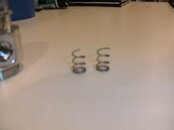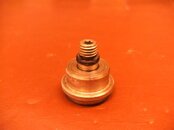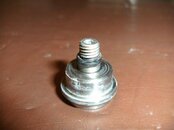Here's an interesting failure that occurred last evening. I hooked up with a buddy and a friend of his, who's a very new diver (3rd dive since OW). We went down to visit this octopus den at about 65 feet, and had just turned the dive when the new guy suddenly started having buoyancy control issues. OK ... sometimes that happens when you start back upslope with a new diver. Usually I just hang back and let them work at it for a while. But watching this fellow I noticed he was dumping an awful lot of air from his BCD ... over and over. I swam over to give him a hand, and a quick glance at his gauge showed that he'd just gone through nearly 1,000 psi in the last minute or so. Rut roh ...
I signaled a direct ascent and grabbed ahold of this fellow's D-ring in case he needed assistance, and we started up. He was blowing large amounts of air out of his BCD the whole way up ... and I was working hard to keep our mutual ascent to a reasonable rate. Forget about a safety stop ... it so wasn't happening. We hit the surface, and that's when I could noticeably hear his overpressure valve sputtering. Ah ... stuck inflator valve. Reached over and popped the LP hose off the rig ... only to watch the damn thing arc violently back and forth behind his head. So I reached back and shut off his air ... by then he didn't have much left in the tank anyway.
Examining the hose showed that the schrader valve was completely missing. My guess is that it had somehow come loose either prior to or during the dive, and when I disconnected the hose it flew out.
In 2800+ dives, I've never seen that happen before ... and here it was happening to a fellow with three dives under his belt. To his credit, he remained calm, and is eager to get back in the water.
Oh ... and to address the preceding replies about aluminum tanks ... they're fine for tropical environment, where folks don't wear much exposure gear, don't need much weight and aren't typically doing aggressive profiles. For colder climes, or longer/deeper dives, larger steel cylinders are much preferable.
Right tool for the job, and all that ...
... Bob (Grateful Diver)






